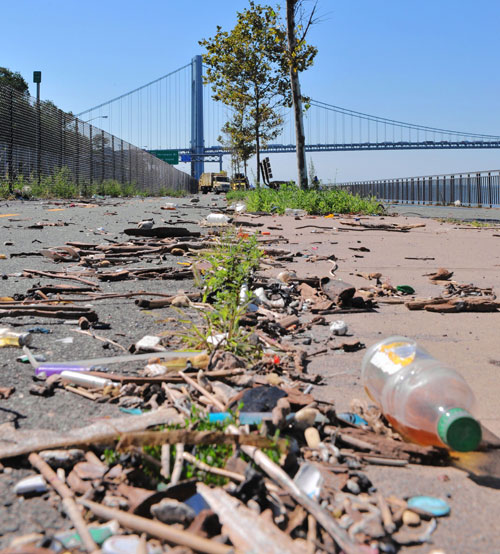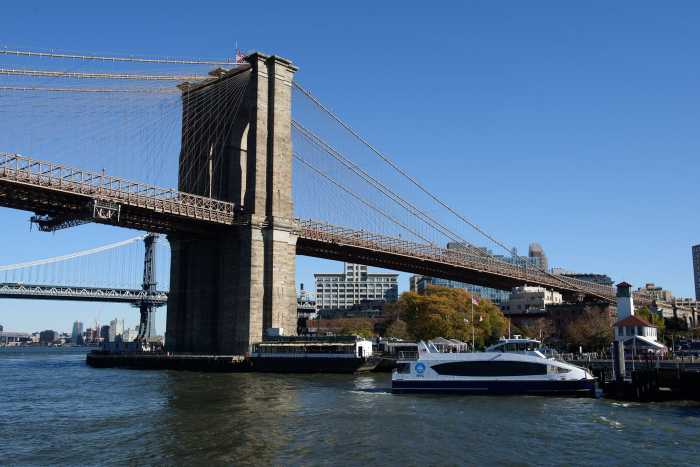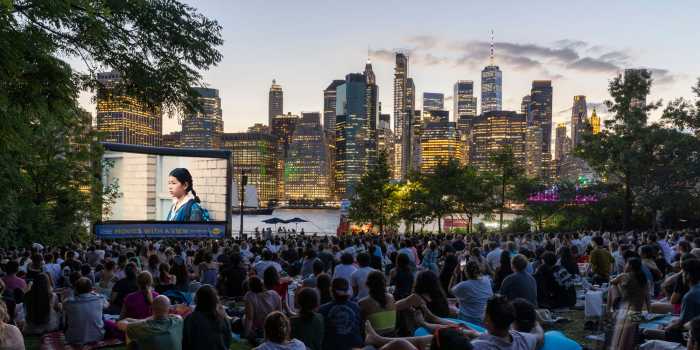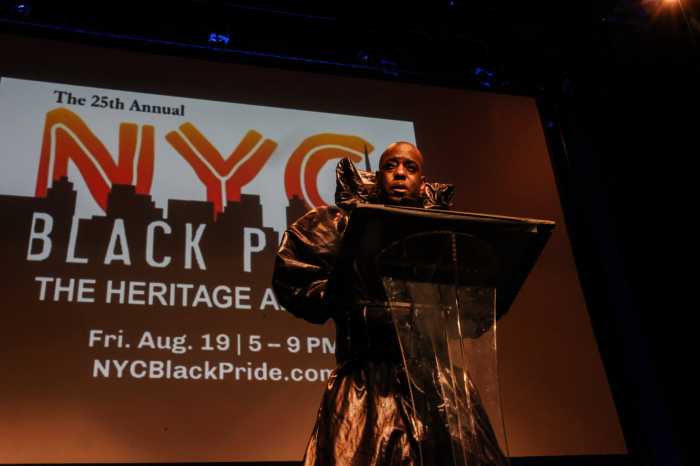Hurricane Irene — the monster gale that many feared was going to tear southern Brooklyn asunder — caused some flooding, but left the borough largely unscathed, leaving residents who were forced to evacuate the Coney Island peninsula wondering what the fuss was all about.
“I was expecting much worse,” said Irena Sasinovich, a Brighton Beach resident who boarded up the windows of her Cass Place home on Saturday, only to see it get spared by Mother Nature. “It wasn’t that bad.”
It wasn’t that bad at all: Hurricane Irene was downgraded to a tropical storm before it hit Coney Island at 9:30 am on Sunday and charged across the borough with heavy rain and more than 70 miles-per-hour winds as it made its way to New England. Residents forced out of their homes were allowed to return less than 24-hours later, at 3 pm on Saturday.
Everyone in southern Brooklyn got a taste of Irene’s kiss, and some areas did suffer more than others: Surf and Emmons avenues were left under a foot of water for most of Sunday morning. A storm surge also flooded sections of the Belt Parkway and Plumb Beach — easily overwhelming the sandbags the city had put down to protect the eroding shoreline and the Belt Parkway.
Over in Marine Park, heavy winds and rains toppled trees and flooded basements. A few hundred residents lost power for about six hours.
But the Irene affect was brief: all roads were passable by noon on Sunday and no fatalities or prolonged power outages were reported.
By 3 pm, residents in Coney Island, Brighton Beach and Manhattan Beach were allowed to return home — less than 24 hours after they were ordered to clear out.
On Friday, Mayor Bloomberg took the unprecedented step of ordering a mandatory evacuation of 150,000 Brooklynites living in low lying areas — giving them until 5 pm on Saturday to pack up and leave.
“We have never done a mandatory evacuation before — and we wouldn’t be doing this now if we didn’t think the storm had the potential to be very serious,” Bloomberg said on Friday. “The best outcome would be if the storm veers off to the east and doesn’t hit us, or doesn’t hit us hard, but we can’t depend on Mother Nature being so kind.”
Bloomberg’s concerns were justified: as Irene barreled up the East Coast late last week, it killed 16 people across six states and left millions without power. Irene was the first hurricane to hit the area since Hurricane Gloria slammed Long Island in 1985.
But the Mayor’s order couldn’t happen at a worse time: a few hours earlier, the Metropolitan Transportation Authority announced that it was going to shut down all train and bus lines throughout the city in anticipation of the storm.
From Friday night until Saturday, cop cars swarmed the low-lying areas, blaring the mayor’s order over loudspeakers. When the 5 pm deadline was reached, city officials blocked off streets leading into the Coney Island peninsula, stopping anyone who tried to enter.
“No one was forced to leave, but everyone got the warning,” said one police source.
Despite this, only 10,000 people spent the night at city shelters, according to the New York Post, suggesting that most residents ordered to leave chose to stay with friends or relatives — or simply stay put.
Maya Augustovski and her boyfriend spent the storm hunkered down in their 17th floor apartment on W. 12th Street in Coney Island.
“We didn’t want to leave our house,” Augustovski said. “The city was overreacting.”
The mayor’s dire predictions sent everyone not living in low-lying areas into survival mode. Hundreds of residents packed the Basics Supermarket on Coyle Street in Sheepshead Bay stocking up on water and other non-perishables needed to weather the storm. Many more flocked to the KeyFood on Gerritsen Avenue and the Waldbaum’s on Ralph Avenue in Georgetown.
Workers at the Toys ‘R’ Us on Flatbush Avenue near the Gil Hodges Bridge battened down the hatches by boarding up all the store’s doors and windows. So did workers at a small strip mall on Knapp Street near Harkness Avenue.
Jeff Nagle didn’t want to leave his boat in the storm so he spent Saturday night on it, tethered to a Sheepshead Bay pier. The next morning, he groused that the storm was much ado about nothing.
“It was way overblown,” said Nagle, whose boat was unharmed.
But Bloomberg defended the city’s response on Sunday afternoon, saying he didn’t want to “take any risk with people’s lives.”
There may have been a lot of fretting over the last three days, but there was also some humor: on Saturday cops stopped a man they caught filling up sandbags on Manhattan Beach. The man, a resident of Langham Street, said that he wanted to use the sandbags to prevent flooding at his home while he evacuated.
After much debate, the cops allowed the Manhattan Beach resident to fill up the sandbags — as long as he brought the sand back to the beach once the storm was over.
“Leave it to Manhattan Beach to have a sand patrol in the middle of a crisis,” said activist Ed Eisenberg, recounting his friend’s tale. “Next time the Mayor could save some tax dollars by hiring an exorcist to stand on the beach and pray the storm away. It would have had the same result.”
– with Thomas Tracy



































